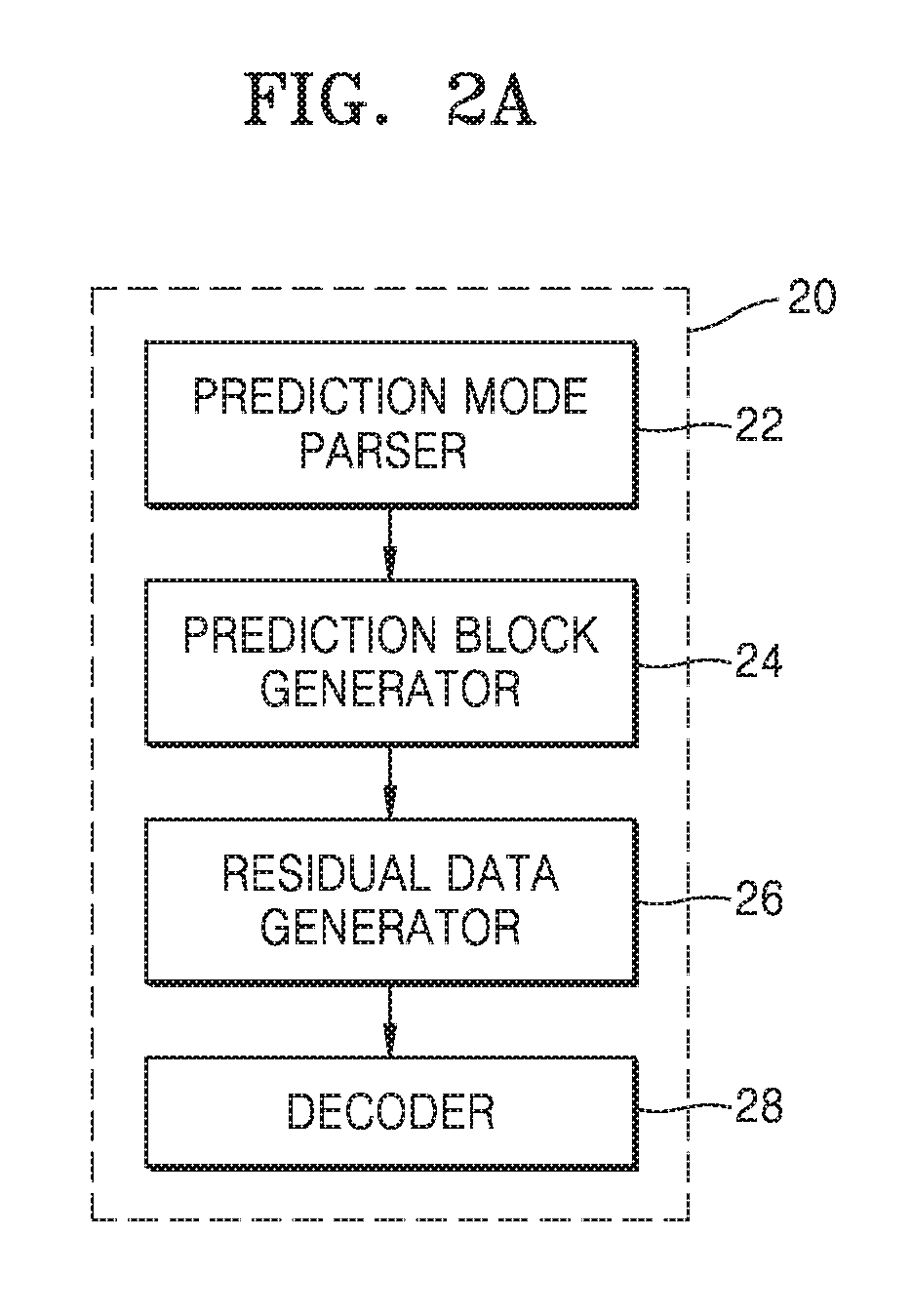Method and device for transmitting prediction mode of depth image for interlayer video encoding and decoding
a prediction mode and depth image technology, applied in the field of interlayer video encoding and decoding methods, can solve the problems of low quality of synthetic images and almost impossible to achieve stereoscopic images, and achieve the effects of efficient encoded or decoded, reducing device complexity, and efficiently generating images
- Summary
- Abstract
- Description
- Claims
- Application Information
AI Technical Summary
Benefits of technology
Problems solved by technology
Method used
Image
Examples
Embodiment Construction
Advantageous Effects
[0007]In an interlayer video decoding and encoding apparatus and method according to an embodiment, a prediction mode of a depth image may be efficiently encoded or decoded to decrease device complexity and efficiently generate an image when images are synthesized.
[0008]Technical aspects and effects of the present disclosure are not limited to the above description and other aspects will become apparent and more readily appreciated to those of ordinary skill in the art from the following description.
BRIEF DESCRIPTION OF THE DRAWINGS
[0009]FIG. 1A is a block diagram of an interlayer video encoding apparatus according to an embodiment.
[0010]FIG. 1B is a flowchart of a video encoding method according to an embodiment.
[0011]FIG. 2A is a block diagram of an interlayer video decoding apparatus according to an embodiment.
[0012]FIG. 2B is a flowchart of a video decoding method according to an embodiment.
[0013]FIG. 3 illustrates an interlayer prediction scheme according to...
PUM
 Login to View More
Login to View More Abstract
Description
Claims
Application Information
 Login to View More
Login to View More - R&D
- Intellectual Property
- Life Sciences
- Materials
- Tech Scout
- Unparalleled Data Quality
- Higher Quality Content
- 60% Fewer Hallucinations
Browse by: Latest US Patents, China's latest patents, Technical Efficacy Thesaurus, Application Domain, Technology Topic, Popular Technical Reports.
© 2025 PatSnap. All rights reserved.Legal|Privacy policy|Modern Slavery Act Transparency Statement|Sitemap|About US| Contact US: help@patsnap.com



